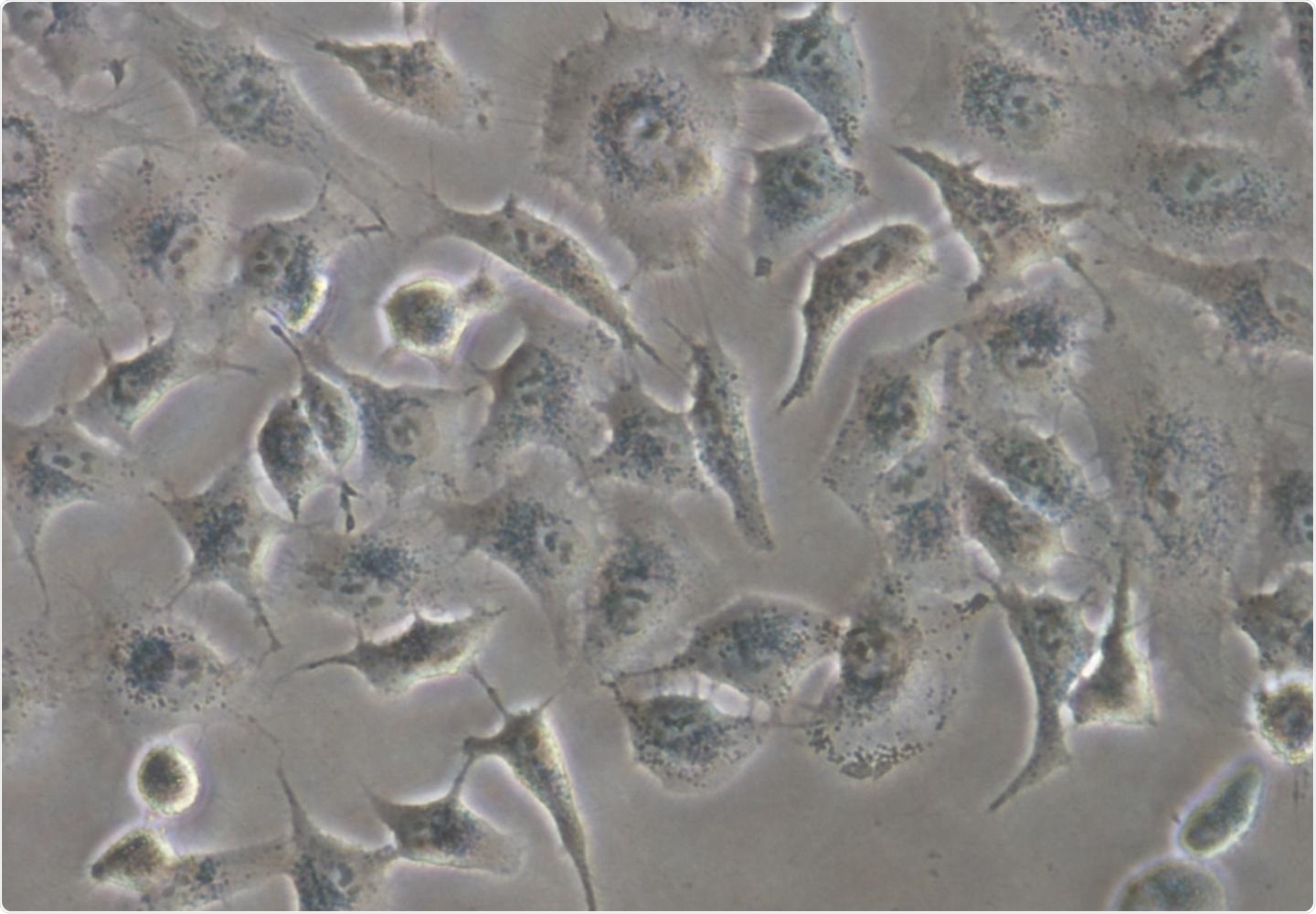Scientists at the Institute for Advanced Chemistry of Catalonia (IQAC) from the Spanish National Research Council (CSIC) have pioneered the use of whole living cells (that is, human lung adenocarcinoma) in dynamic combinatorial chemistry systems.

Human lung adeconarcinoma cell used in this research. Image Credit: Daniel Carbajo.
Published in the Angewandte Chemie International Edition journal, the study has introduced a unique methodology to discover novel bioactive molecules in a realistic biological medium.
In the future, this approach could help develop techniques to protect the extracellular matrix against microorganisms or to differentiate between healthy and cancer cells.
This unique approach is based on Dynamic Combinatorial Chemistry (DCC), in which the identification, selection, and preparation of molecules are combined in a single process for a given application. Thus, it helps speed up the development of new functional compounds.
This methodology, therefore, has a huge potential in the fast identification of novel molecules with promising biological activity.
In the current study, the research team headed by Ignacio Alfonso from the Institute of Advanced Chemistry of Catalonia has pioneered the use of “live templates” for the optimization and identification of new ligands, which are simple synthetic molecules, for biological targets.
In our study we have worked with cancer cells used as a 'templates', so the molecule able to interact with the outside of these cells (templates), will increase its concentration over the mixture of molecules that integrate the dynamic combinatorial library.”
Ignacio Alfonso, Researcher, Institute of Advanced Chemistry of Catalonia
Alfonso continued, “The extracellular matrix is closely related to cellular communication and signaling, and it is essential in processes such as cancer metastasis or cellular infection by pathogens. Besides, it is the first barrier that a drug has to cross to enter our cells.”
“Another hurdle is the difficulty to design molecules able to interact with the extracellular matrix due to its complex structure. But the results of our study allow us to identify and quantify the ligands for the extracellular matrix directly using living cells, which opens up multiple development possibilities in this field of research,” Alfonso further added.
The following step was to produce the amplified molecule. Then, using nuclear magnetic resonance, the communication between these molecules, and the extracellular matrix of the living cells was validated.
Finally, following these cellular studies, assays between the detected molecules and chondroitin sulfate, the main component of the glycosaminoglycans in the extracellular matrix of this type of cells, were performed.
We also used molecular dynamics simulations to understand the molecular recognition process that explains our results from a chemical point of view.”
Ignacio Alfonso, Researcher, Institute of Advanced Chemistry of Catalonia
The methodology employed in this study is the best research tool with promising applications in the characterization and diagnosis of diseases.
It could lead to the faster discovery of bioactive molecules, since the selection is made in a medium that is more similar to the biological medium in which these biomolecules will act.”
Ignacio Alfonso, Researcher, Institute of Advanced Chemistry of Catalonia
Source:
Journal reference:
Carbajo, D., et al. (2020) Live-Cell-Templated Dynamic Combinatorial Chemistry. Angewandte Chemie International Edition. doi.org/10.1002/anie.202004745.